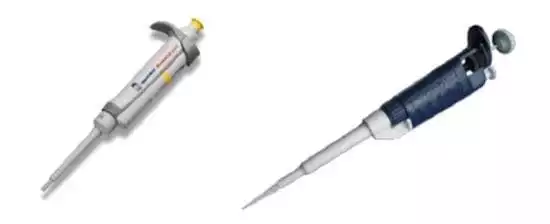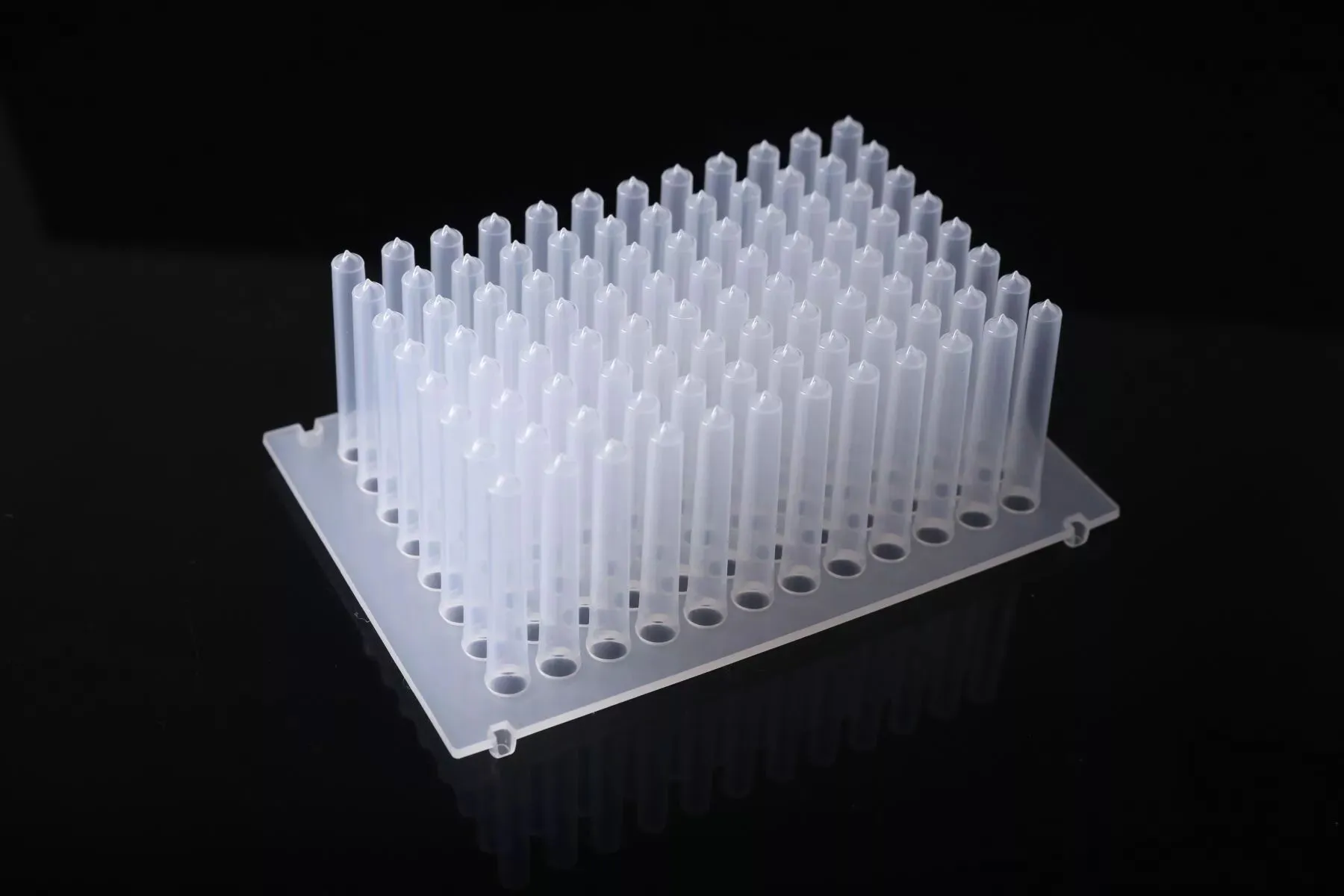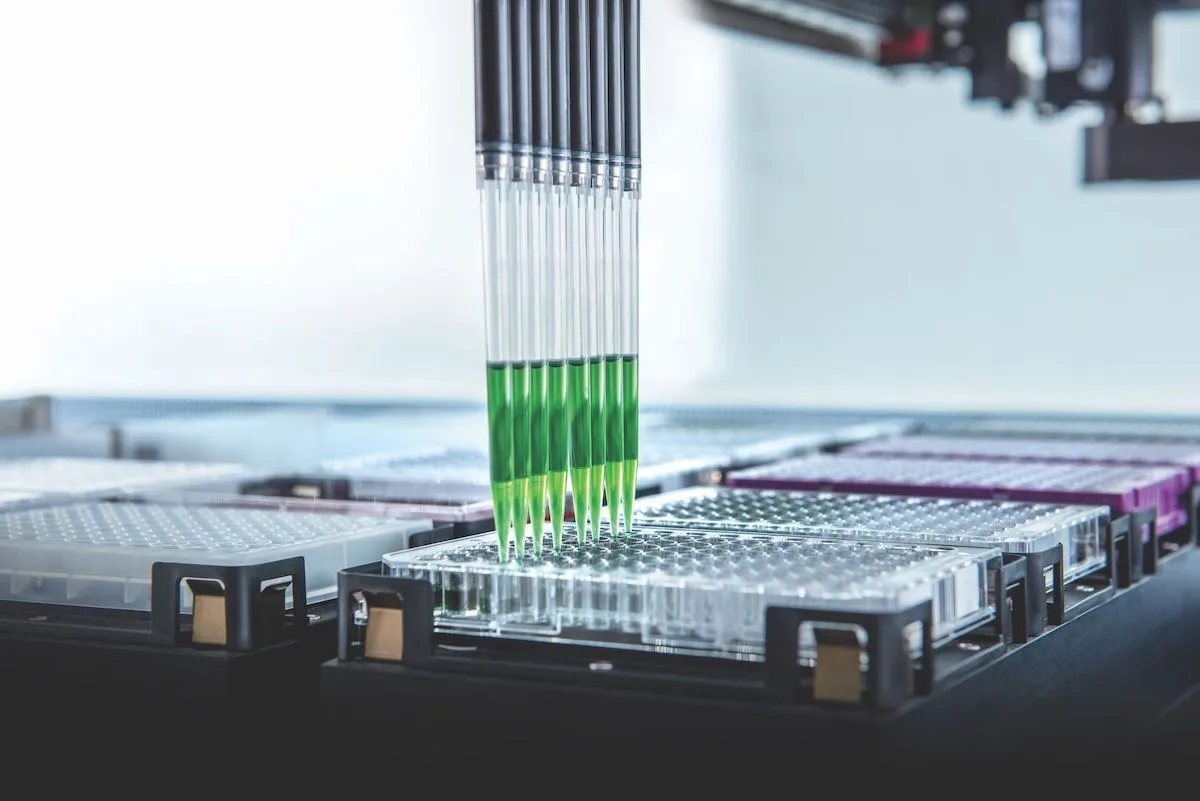A Pipettor and Its Pipette Tips
Dec 30, 2022
A pipettor is an instrument for quantitatively transferring liquids, and is widely used in the fields of biological sciences, medicine, and chemistry, as shown in Figure 1. The main function of the pipettor is to take liquid, and it can precisely adjust the pipetting volume within a certain capacity range. Its working principle is that the movement mileage is controlled by the adjustment wheel through the up and down movement of the piston in the device. Press the button to make the piston move downward, and then discharge the gas in the piston. After the button is released, the return spring resets the piston, which is called liquid extraction. In addition to the quantitative transfer liquids, another feature of the pipette is that it can avoid the possibility of cross-contamination between different solutions by replacing the tips. Therefore, many pipette tips will be involved in the operation of using the pipettor.

Figure 1 Pipettors
As a common operating instrument in the laboratory, the pipettor consumes a lot of pipette tips and high requirements are put forward. The pipette tip effectively protects both the test sample and the pipettor, thereby ensuring the safety of samples and distribution of samples. Because the structure of the tip is relatively precise and easy to damage, to facilitate the easy replacement of the tip or to achieve the purpose of sterility during the experimental operation, the pipette tip needs to be placed in the pipette tip box before use.
The package of pipette tips is one of the routine tasks in biological and chemical laboratories. The general operation is to manually put pipette tips into boxes one by one for subsequent sterilization or direct use. The daily consumption of tips in biological laboratories ranges from more than 10 boxes to hundreds of boxes. It takes about 3 to 4 minutes to fill a box of tips. Therefore, it takes hours to manually put the tips in the box every day, which is time-consuming. Moreover, this not only has low efficiency, but also causes secondary contamination of the tip. Therefore, the arrangement of medical pipette tips by manual labor can no longer meet the production requirements of existing medical facilities and laboratories. There is a gap in the current automated packaging and boxing equipment, and an automated loading system that can form a certain production capacity is urgently needed for experiments.

Figure 1 Pipettors
As a common operating instrument in the laboratory, the pipettor consumes a lot of pipette tips and high requirements are put forward. The pipette tip effectively protects both the test sample and the pipettor, thereby ensuring the safety of samples and distribution of samples. Because the structure of the tip is relatively precise and easy to damage, to facilitate the easy replacement of the tip or to achieve the purpose of sterility during the experimental operation, the pipette tip needs to be placed in the pipette tip box before use.
The package of pipette tips is one of the routine tasks in biological and chemical laboratories. The general operation is to manually put pipette tips into boxes one by one for subsequent sterilization or direct use. The daily consumption of tips in biological laboratories ranges from more than 10 boxes to hundreds of boxes. It takes about 3 to 4 minutes to fill a box of tips. Therefore, it takes hours to manually put the tips in the box every day, which is time-consuming. Moreover, this not only has low efficiency, but also causes secondary contamination of the tip. Therefore, the arrangement of medical pipette tips by manual labor can no longer meet the production requirements of existing medical facilities and laboratories. There is a gap in the current automated packaging and boxing equipment, and an automated loading system that can form a certain production capacity is urgently needed for experiments.
Previous: Quality Management of Pipette Tip Molds
Next: Factors of Automatic Packaging of Pipette Tips


